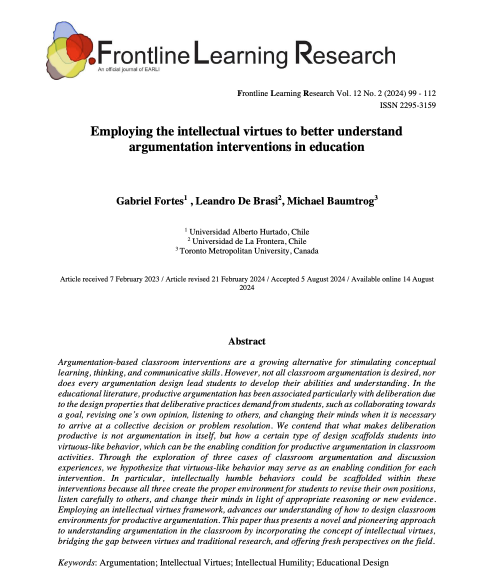Frontline Learning Research

Argumentation-based classroom interventions are a growing alternative for stimulating conceptual learning, thinking, and communicative skills. However, not all classroom argumentation is desired, nor does every argumentation design lead students to develop their abilities and understanding. In the educational literature, productive argumentation has been associated particularly with deliberation due to the design properties that deliberative practices demand from students, such as collaborating towards a goal, revising one’s own opinion, listening to others, and changing their minds when it is necessary to arrive at a collective decision or problem resolution. We contend that what makes deliberation productive is not argumentation in itself, but how a certain type of design scaffolds students into virtuous-like behavior, which can be the enabling condition for productive argumentation in classroom activities. Through the exploration of three cases of classroom argumentation and discussion experiences, we hypothesize that virtuous-like behavior may serve as an enabling condition for each intervention. In particular, intellectually humble behaviors could be scaffolded within these interventions because all three create the proper environment for students to revise their own positions, listen carefully to others, and change their minds in light of appropriate reasoning or new evidence. Employing an intellectual virtues framework, advances our understanding of how to design classroom environments for productive argumentation. This paper thus presents a novel and pioneering approach to understanding argumentation in the classroom by incorporating the concept of intellectual virtues, bridging the gap between virtues and traditional research, and offering fresh perspectives on the field.
